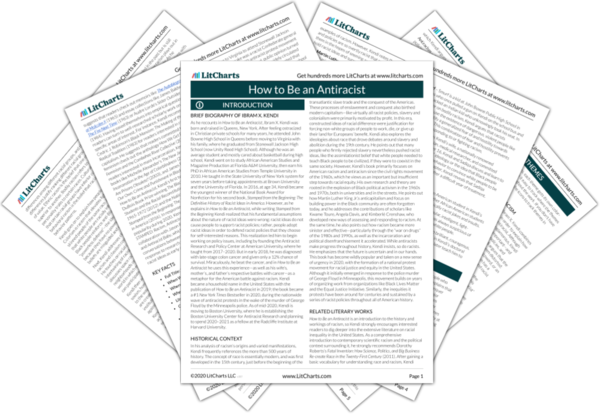Previous
Chapter 8: Behavior
|
Previous
Chapter 8: Behavior
|
How to Be an Antiracist: Chapter 9: Color Summary & Analysis |
Next
Chapter 10: White
|


Upgrade to unlock the analysis and theme tracking for all of How to Be an AntiracistHow to Be an Antiracist!
Get LitCharts A+